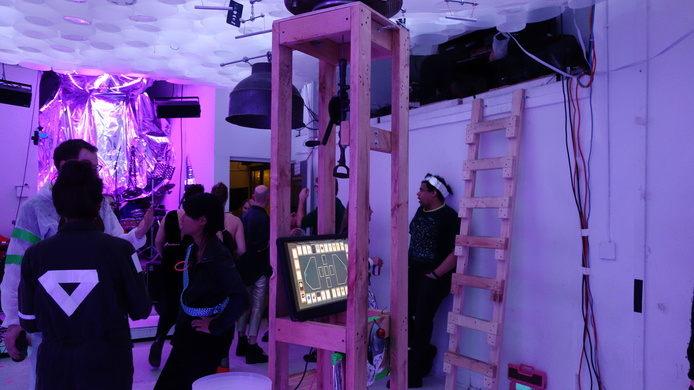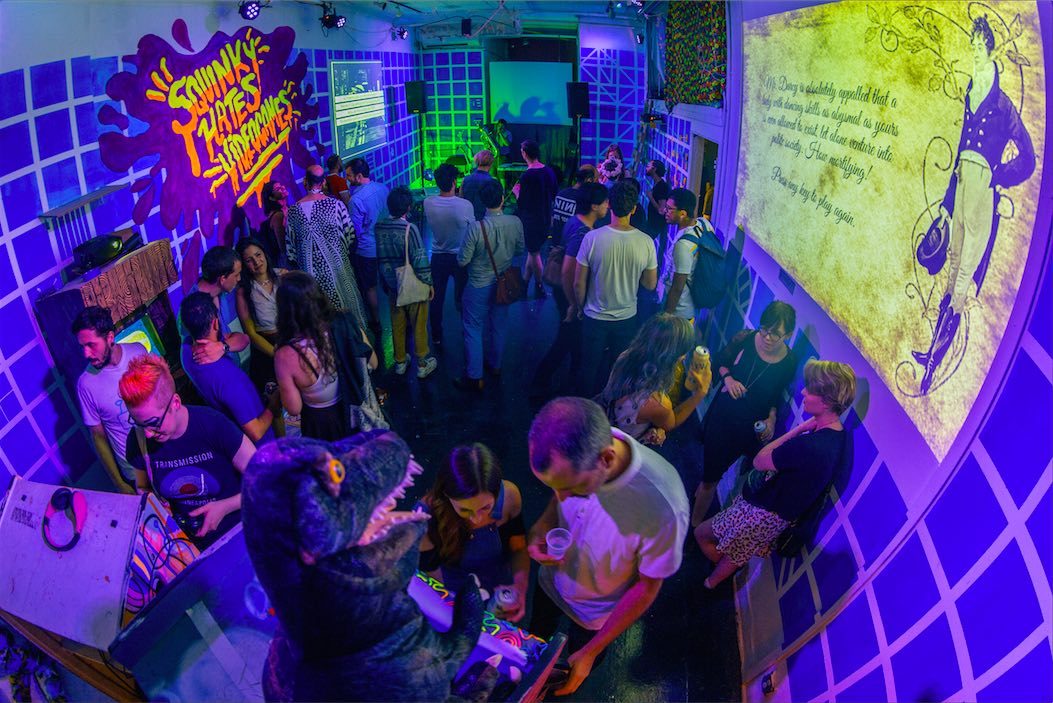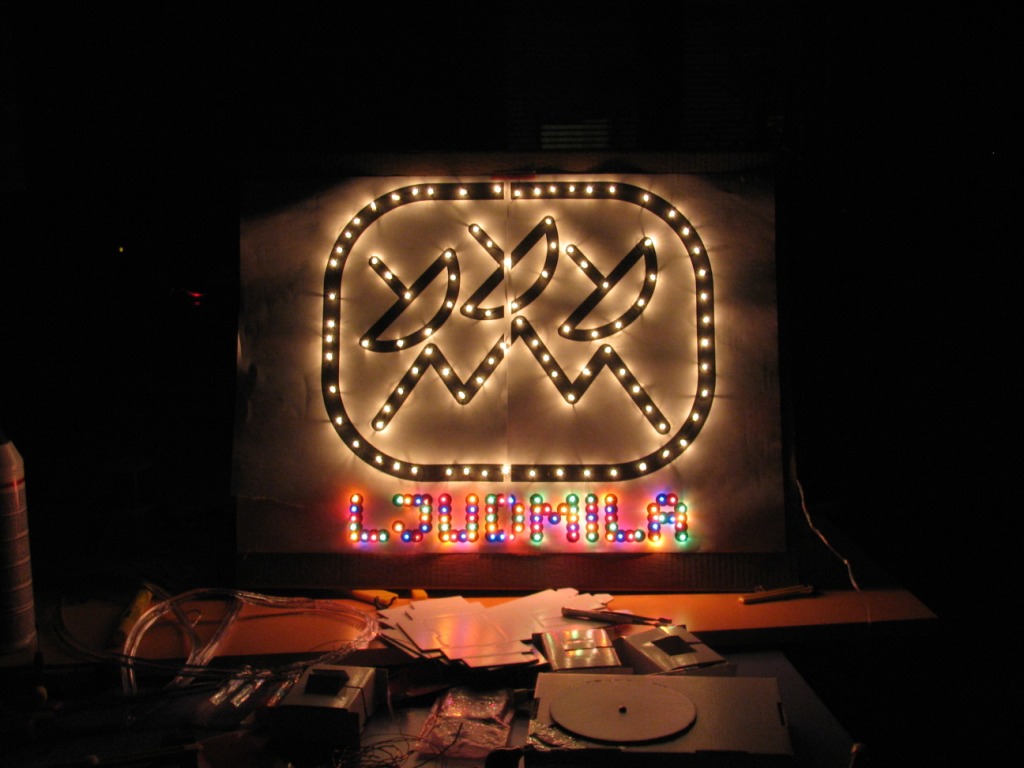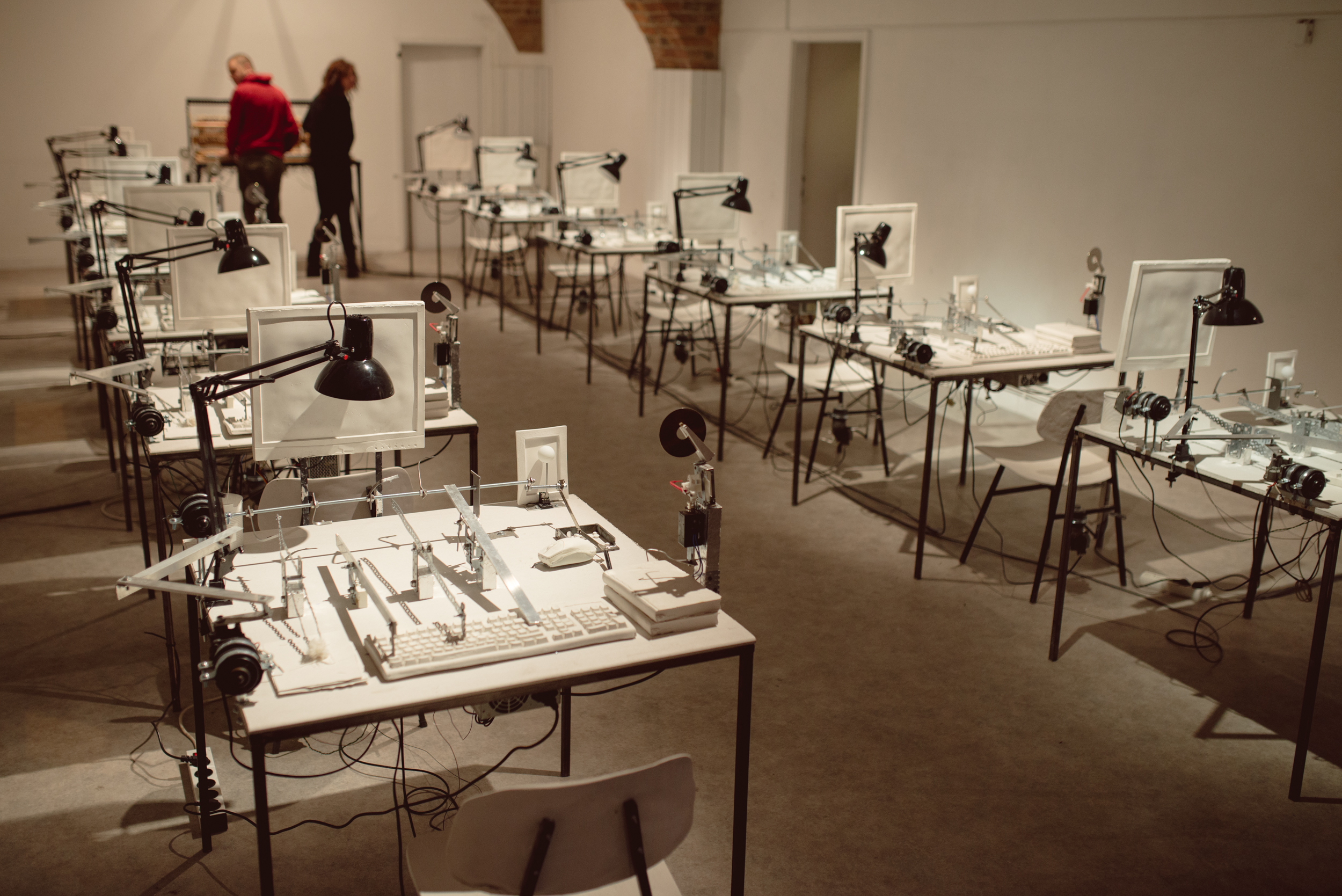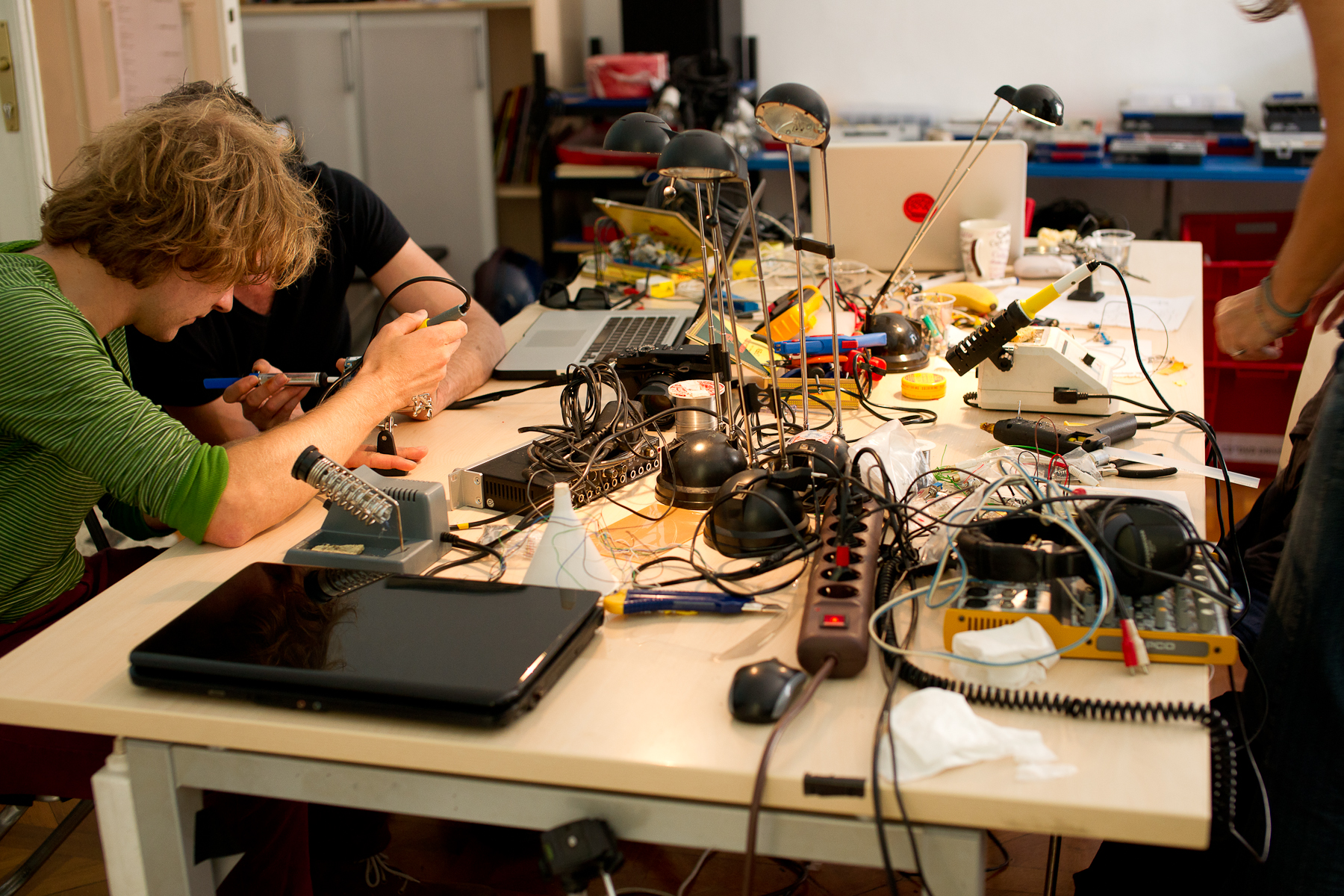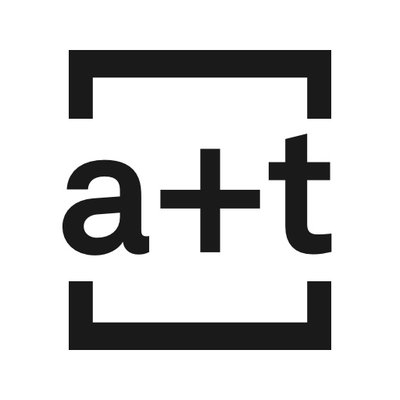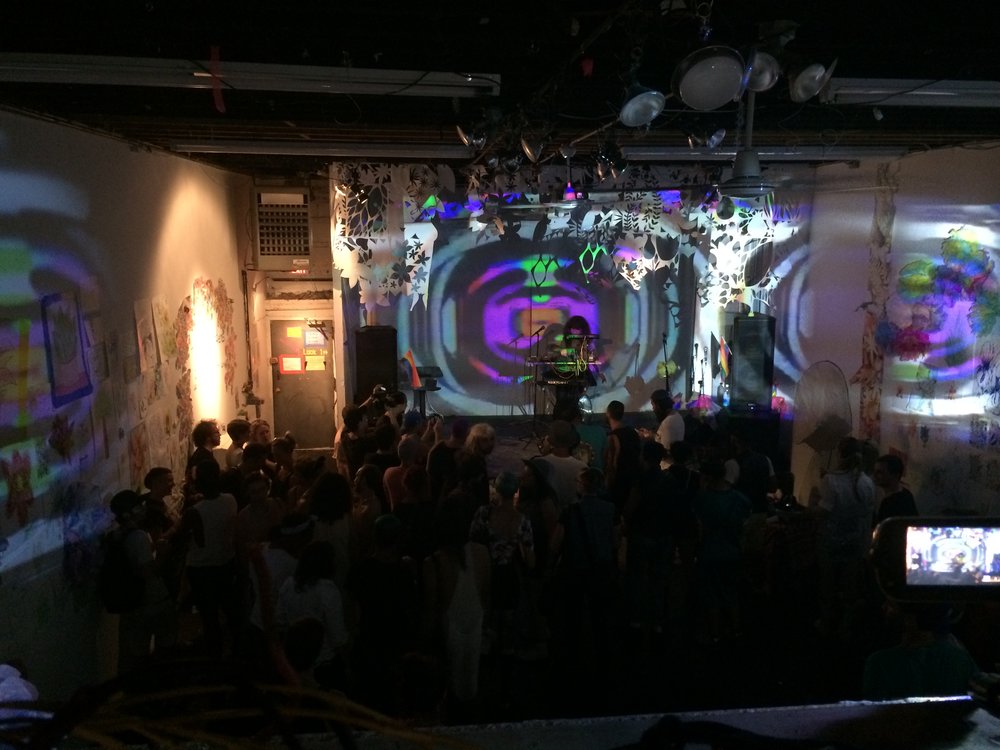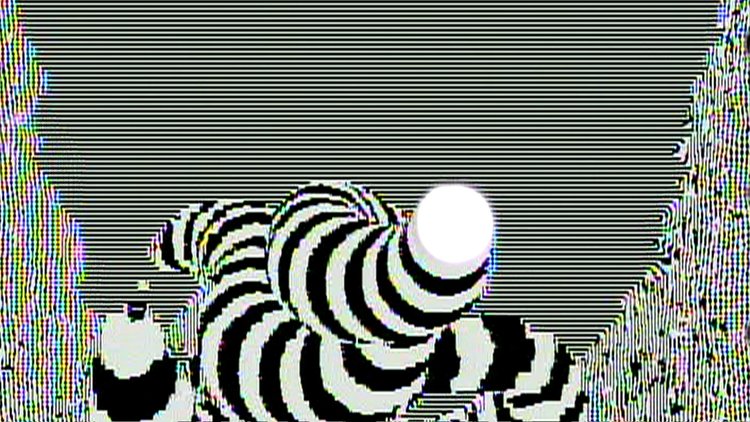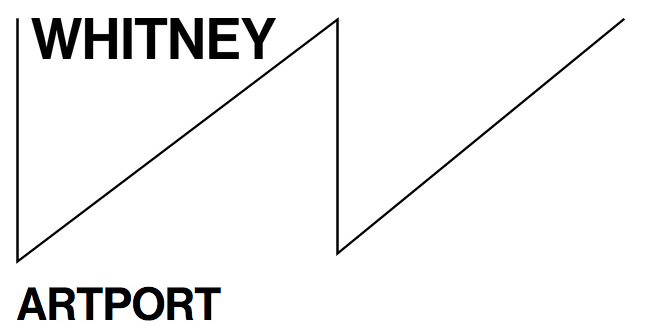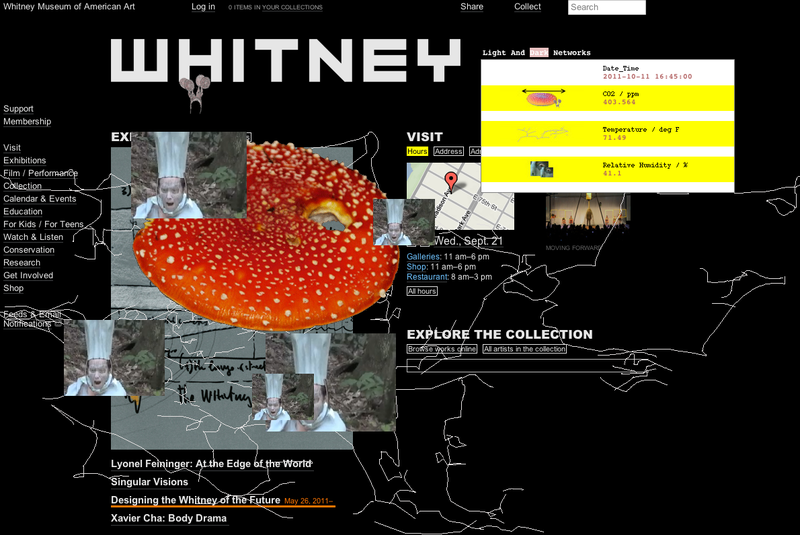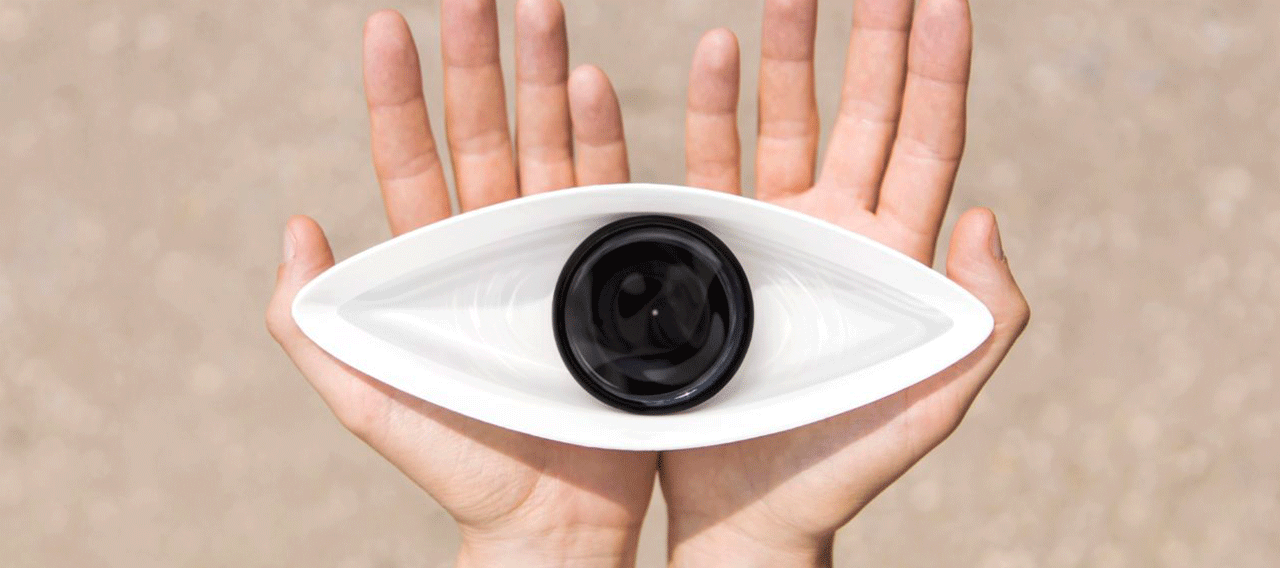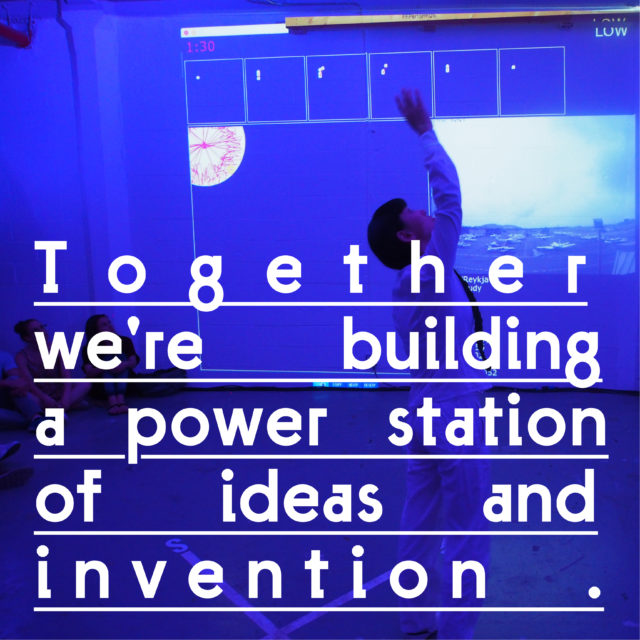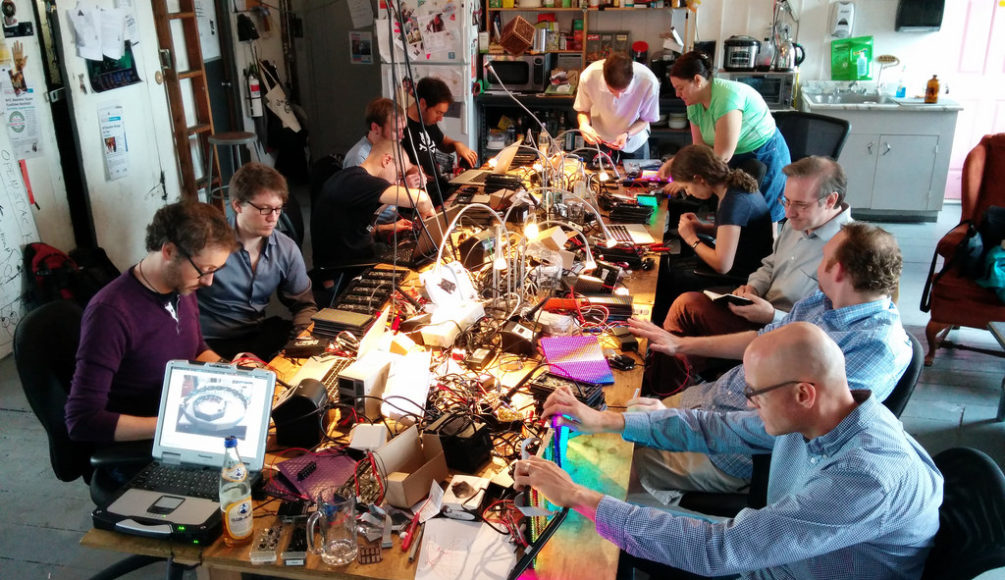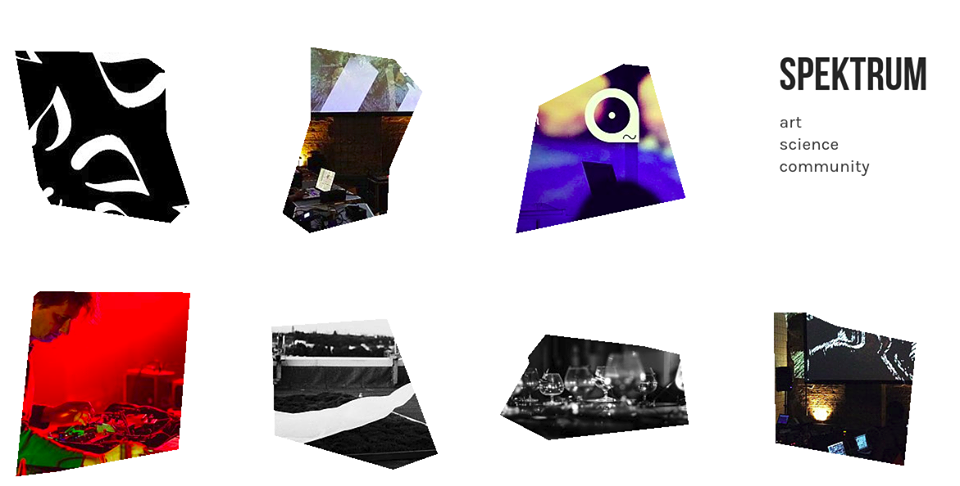Babycastles mission is to amplify the diversity of voices in videogame culture by providing artists support to actualize ideas and expose that work to new audiences.[1]
Drawing values from our history in New York’s DIY scene, Babycastles provides an open, accessible and collaborative platform for sharing experimental work across a broad community of artists, musicians, writers, technologists, gamemakers, students, organizers, activists, researchers, chefs, scientists, teachers, animators, zinemakers, filmmakers, moms, modders, curators, speedrunners, builders, journalists, storytellers, comedians, poets, dancers, LARPers, playwrights, Wikipedia editors, botmakers, programmers, performers, algorithms, AI…[1]
The Babycastles art collective began in 2010, roaming between locations throughout New York but usually showcasing events and exhibits at Silent Barn in Brooklyn. After settling into a permanent Chelsea home in 2014, the collective could host musical performances as well as more frequent revolving art shows.[2]
The concerts included all genres—lots of electronic and chiptune acts, but sometimes more obscure, self-proclaimed “nerdy” acts like The Doubleclicks too. It’s not just music either. The venue puts on poetry readings and live theater as well, like the immersive fantasy musical The Universe is a Small Hat. To top it off, Babycastles functions as a coworking space during daytime hours.[2]
